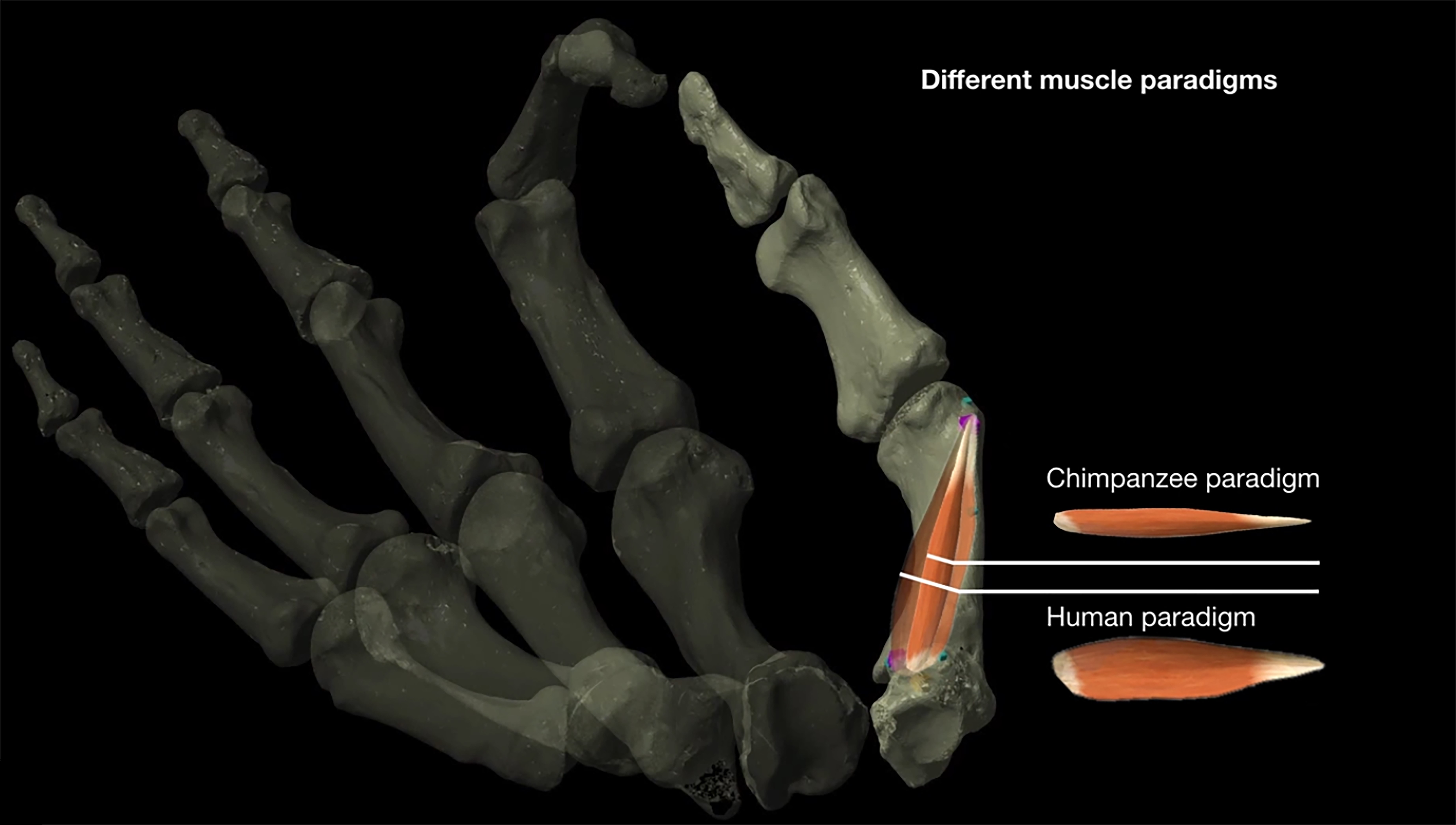The evolution of the opposable thumb is often placed hand-in-hand with the rise of stone tools.
Without the ability to grasp or manipulate objects with power and precision, some scientists think our early human ancestors may never have driven our species to such great success.
It's an interesting hypothesis, but opposable thumbs and tools might not be as intertwined as we once thought. In fact, early humans may have been making and using tools long before their thumbs matched our own.
A new study has found that opposable thumbs evolved around 2 million years ago - and there's evidence of human ancestors making stone tools before that.
In recent years, Australopithecines, a genus of early hominins, have emerged as possibly the earliest humans with indirect evidence of tool use, between 2 and 3 million years ago. The new research suggests their thumbs at this time were more similar to those of chimps than to ours.
Compared with their primate ancestors, Australopithecines had better manual dexterity, researchers say. But while their hands are similarly proportioned to modern humans, their thumbs couldn't achieve the same extent of efficient opposition that we have today.
"Increased manual dexterity in the form of efficient thumb opposition was among the early defining characteristics of our lineage, providing a formidable adaptive advantage to our ancestors," says paleoanthropologist Katerina Harvati of the Eberhard Karls University of Tübingen in Germany.
"These consistently high dexterity levels in species of Homo are indicative of the great adaptive value of thumb opposition for human biocultural evolution," she adds.
The idea that our opposable thumbs somehow played a role in the evolution of human tools has been talked about for decades, yet up until now we still haven't really understood exactly when efficient thumb use arose in human history and how it mapped with our development of tools.
In 2015, researchers found Australopithecus africanus had a bone pattern in its thumb and palms which would have allowed for forceful opposition of the thumb well over 2 million years ago.
Back in 2011, another species of Australopithecus, known as A. sediba, which lived closer to 2 million years ago, was also interpreted as having human-like precision grasping.
The new research refutes these older studies. It relies not on comparative anatomy, as they do, but on the biomechanics of the thumb itself.
To achieve this, the team focused on a single muscle and joint in the hominin hand. The muscle, known as opponens pollicis, is thought to be crucial for thumb opposition, allowing flexion at the trapeziometacarpal joint (TMC).
The location of this muscle, its pathway and its general areas of attachment were compared among a variety of fossils of human species.
"Our methodology integrates cutting-edge virtual muscle modeling with three-dimensional analysis of bone shape and size," explains biomechanics expert Alexandros Karakostis from the University of Tübingen.
"Importantly, we were able to validate the predictions of our models by confirming that the differences observed between living taxa - chimpanzees and modern humans - reflect those reported from past experimental studies."
 The difference between modern human and chimp thumb muscles. (Harvati, Karakostis and Haeufle)
The difference between modern human and chimp thumb muscles. (Harvati, Karakostis and Haeufle)
While our own genus, including Neanderthals (Homo neanderthalensis) showed similarly high degrees of manual dexterity, other hominins did not.
Thumb efficiency and dexterity in all Australopithecines was consistently lower.
Even the latest species of Australopithecus, A. sediba, showed lower flexion at the TMC joint. Interestingly enough, however, early hominins from this time period, found at the Swartkrans site in South Africa, had hands much more similar to our own.
In fact, scientists say the Swartkrans' thumb mechanics are halfway between chimpanzees and modern humans.
"One of the greatest surprises was to find that hominin hand fossils from the Swartkrans site in South Africa, which date to ca. 2 million years ago and are attributed to either early Homo or to the extinct hominin side branch Paranthropus robustus, could achieve a thumb-using dexterity similar to that of modern humans," says Karakostis.
Such dexterity could be a reason why the hominins found at the Swartkans's site are considered the earliest users of fire and the first to begin butchering large animals in South Africa.
This shift, the authors note, potentially gave rise to "a significant evolutionary advantage, which might have been part of the crucial bio-cultural developments taking place after 2 million years.
Pretty much from then on, early humans had the tools they needed to exploit resources, disperse out of Africa and develop a complex culture.
But it's possible that even before then, species of Australopithecus were using stone tools with less precision.
The authors are now hoping to look more closely at the hands of specific groups of hominids, including Neanderthals, to better understand the timeline of our own thumbs and what they have helped us achieve over millions of years.
The study was published in Current Biology.
#Humans | https://sciencespies.com/humans/tantalizing-evidence-hints-ancient-humans-had-stone-tools-before-opposable-thumbs/
No comments:
Post a Comment